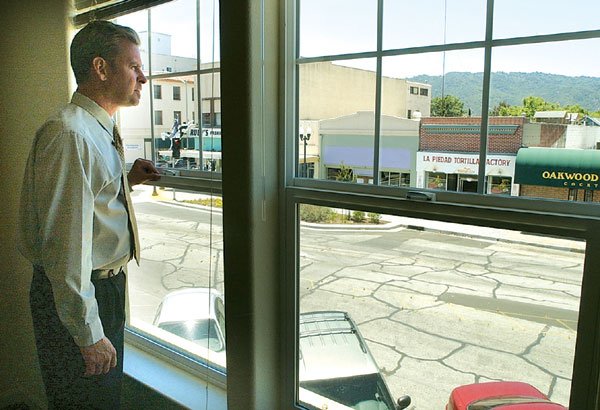GILROY
– A lawsuit that claims the city does too little to encourage
affordable housing swayed the City Council to look elsewhere when
seeking to open up more market-rate housing downtown.
GILROY – A lawsuit that claims the city does too little to encourage affordable housing swayed the City Council to look elsewhere when seeking to open up more market-rate housing downtown.
In a study session last week, the Council agreed with the Downtown Specific Plan Task Force that the revitalized downtown they envision includes more market-rate housing – specifically, apartments above shops – than is currently allowed under the city’s growth-control law.
“If people live downtown, they stay downtown and shop there, and that’s a big part of revitalizing,” Councilman Bob Dillon said.
The city has given out all 150 permits under its housing cap for “small projects” until at least 2008. Small projects are those with fewer than 12 market-rate units.
No one, however, has taken any of 530 affordable units, and task force members wanted to borrow from this category for downtown small projects.
Council members, however, decided to spare the affordable units and instead borrow from a pool of housing permits saved for the years 2009 through 2013, which have yet to be assigned to categories (“affordable,” “small projects,” “seniors,” etc.).
The lawsuit, which three women filed in early May with the help of several San Francisco advocacy law firms, “certainly influenced the discussion,” city Planning Manager Bill Faus said.
To qualify as affordable, a unit must be committed to house only low-income residents for 50 years. To qualify as low-income, a family of four must make less than roughly $80,000 a year.
There is some momentum now in redeveloping downtown, task force members have said, and developers are interested in building market-rate upstairs apartments there. Task force members fear that energy will be squelched if developers have to wait too long.
In that spirit, all seven Council members gave a preliminary OK to a task force proposal to shift housing units downtown. They asked city staff to develop a plan for consideration at an upcoming meeting.
“We’re all quite excited about that,” Dillon said. “We like the idea of residential over retail. … We don’t want to let the lack of housing permits … stop development downtown.”
Downtown technically won’t be eligible for more housing permits until its specific plan is finished – another year, according to Bill Lindsteadt, one of the task force’s more optimistic members – but the Council could move permits there now and repay them when the specific plan is done.
The Council will probably not give downtown the 250 housing permits task force members requested. Fifty to 100 is more likely, according to Faus and Dillon.
The task force’s decision to bring the permit-switching plan to Council was not unanimous. Among the naysayers were Chairman Gary Walton, who advised waiting for the specific plan, which he said would weed out undesirable proposals.
One of the few downtown, market-rate projects that got a permit before they vanished is for a new housing/retail/office structure at Monterey and Lewis streets, on a vacant lot next to the Strand Theater. The Hewell and Sheedy contracting firm proposed it; David Sheedy sits on the task force.
“They’re just gorgeous,” Dillon said of the building’s plans. “It’s exactly the kind of thing you want downtown.”
In addition to small projects, developers have openly discussed building larger complexes downtown with between 12 and 50 housing units each, according to Faus.
In an even bigger project, the area’s largest affordable housing developer is planning to build a mixed-income apartment building on the site of a decrepit downtown cannery at Lewis and Railroad streets. South County Housing would build 90 to 150 apartments there, half low-income, half market-rate. On Thursday, a demolition crew hired by property owner A.J. Patel was tearing down the existing structure.
South County Housing Executive Director Dennis Lalor supported the plan to borrow from affordable housing permits because his group would have to wait years to claim those permits anyway, he told the task force in April. Affordable housing developers generally move more slowly than market-rate builders on claiming housing permits because they are usually nonprofit and take longer to secure funding, Lalor said.
The growth-control ordinance has a 3,450-unit cap for new housing in Gilroy over 10 years, starting this year. This goal cannot be changed until 2009.
Peter Crowley covers public safety for The Dispatch. You can reach him at pc******@************ch.com or 847-7109.














